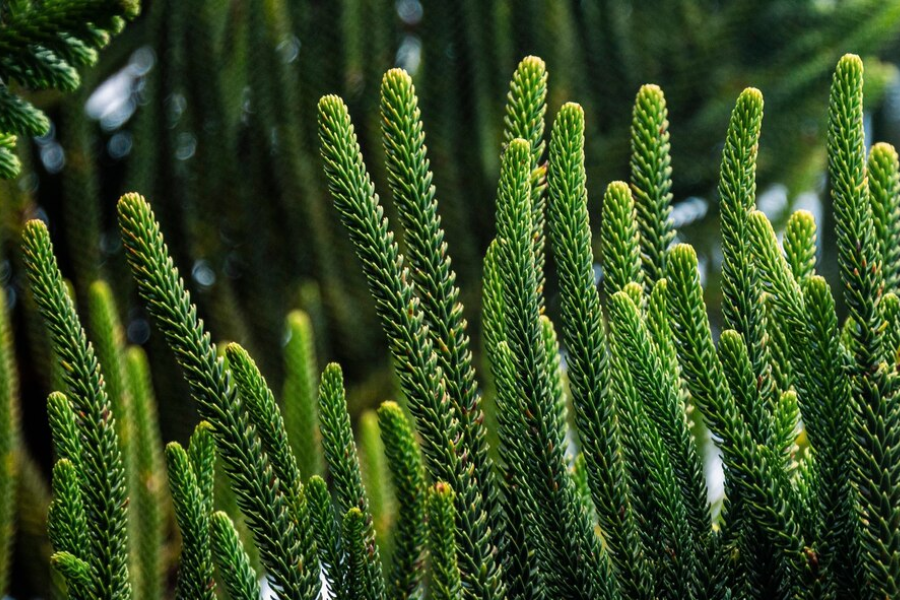Is Norfolk Island Pine a Monocot or Dicot?
The Norfolk Island Pine (Araucaria heterophylla) is a unique tree native to Norfolk Island in the Pacific Ocean. Despite its name, this tree doesn’t belong to the Pinus genus but instead is a part of the Araucariaceae family, which comprises ancient conifers. One of the common questions regarding the Norfolk Island Pine is whether it is a monocot or a dicot. In this article, we’ll explore the characteristics of the Norfolk Island Pine and differentiate between monocots and dicots to clarify its classification.
Understanding Monocots and Dicots
To determine whether the Norfolk Island Pine is a monocot or dicot, it’s important to first understand the basic differences between these two types of flowering plants.
Monocots:
Monocotyledons, or monocots, are a group of flowering plants characterized by having only one seed leaf, known as a cotyledon, during germination. They typically have parallel-veined leaves, floral parts in multiples of three, and a fibrous root system.
- Examples of Monocots: Grasses, lilies, palm trees, orchids, and monocotyledonous plants.
- Key Features:
- One cotyledon.
- Parallel leaf veins.
- Fibrous root system.
Dicots:
Dicotyledons, or dicots, are another group of flowering plants that typically have two seed leaves during germination. They usually feature branched (net-like) leaf veins, floral parts in multiples of four or five, and a taproot system.
- Examples of Dicots: Trees such as oak, maple, and beans, along with many flowering plants like roses and sunflowers.
- Key Features:
- Two cotyledons.
- Net-veined leaves.
- Taproot system.
Norfolk Island Pine: A Brief Overview
The Norfolk Island Pine (Araucaria heterophylla) is not a true pine but belongs to the Araucariaceae family, a group of ancient conifers. Native to Norfolk Island, this tree is commonly grown as an ornamental due to its striking, tree-like appearance resembling a typical pine. It is well-known for its tall, symmetrical structure with branches that extend outward like a Christmas tree.
Despite its common association with “pines,” it is not a member of the Pinus genus. The tree is recognized for its distinctive whorled branches and narrow, spirally arranged leaves, which give it a unique look.
Characteristics of Norfolk Island Pine:
- Growth Habit: Grows to a height of about 65-80 feet, with horizontal branching.
- Leaves: Needle-like, but not typical pine needles. They are green, long, and narrow.
- Reproduction: Produces cones for reproduction, but unlike true pines, these are not typically woody.
- Root System: Norfolk Island Pines typically have a well-developed taproot system.
Norfolk Island Pine: Monocot or Dicot?
To determine if the Norfolk Island Pine is a monocot or a dicot, we need to examine the plant’s characteristics against the key features of each group.
1. Cotyledon:
- In terms of cotyledons (seed leaves during germination), monocots have one, while dicots have two.
- The Norfolk Island Pine does not fall under the monocot category because its seedling develops two cotyledons, not one.
2. Leaf Veins:
- Monocots have parallel veins in their leaves, while dicots have net-like veins.
- The Norfolk Island Pine has needle-like leaves with net-veined patterns, typical of dicots.
3. Root System:
- Monocots have a fibrous root system, while dicots generally have a taproot system.
- The Norfolk Island Pine exhibits a taproot system, reinforcing its classification as a dicot.
4. Flower Parts:
- Monocots typically have floral parts in multiples of three.
- Dicots usually have floral parts in multiples of four or five.
- The Norfolk Island Pine doesn’t flower like typical dicots, but it produces cones, aligning more closely with dicot characteristics.
5. Family and Evolutionary Lineage:
- The Norfolk Island Pine belongs to the Araucariaceae family, an ancient lineage of conifers.
- These families are distinct from both monocots and most dicots, but in terms of structural and developmental traits, the Norfolk Island Pine’s features lean more toward dicot characteristics.
Conclusion
Based on the key characteristics such as cotyledon count, leaf vein structure, root system, and reproductive structures, the Norfolk Island Pine (Araucaria heterophylla) is classified as a dicot. While it may resemble some features of pines, its distinct structure and evolutionary lineage as a conifer place it outside the monocot group. Understanding these classifications helps clarify its botanical identity and distinction from true pines.
Explore exhilarating adventures and experiences at discoverthrill







